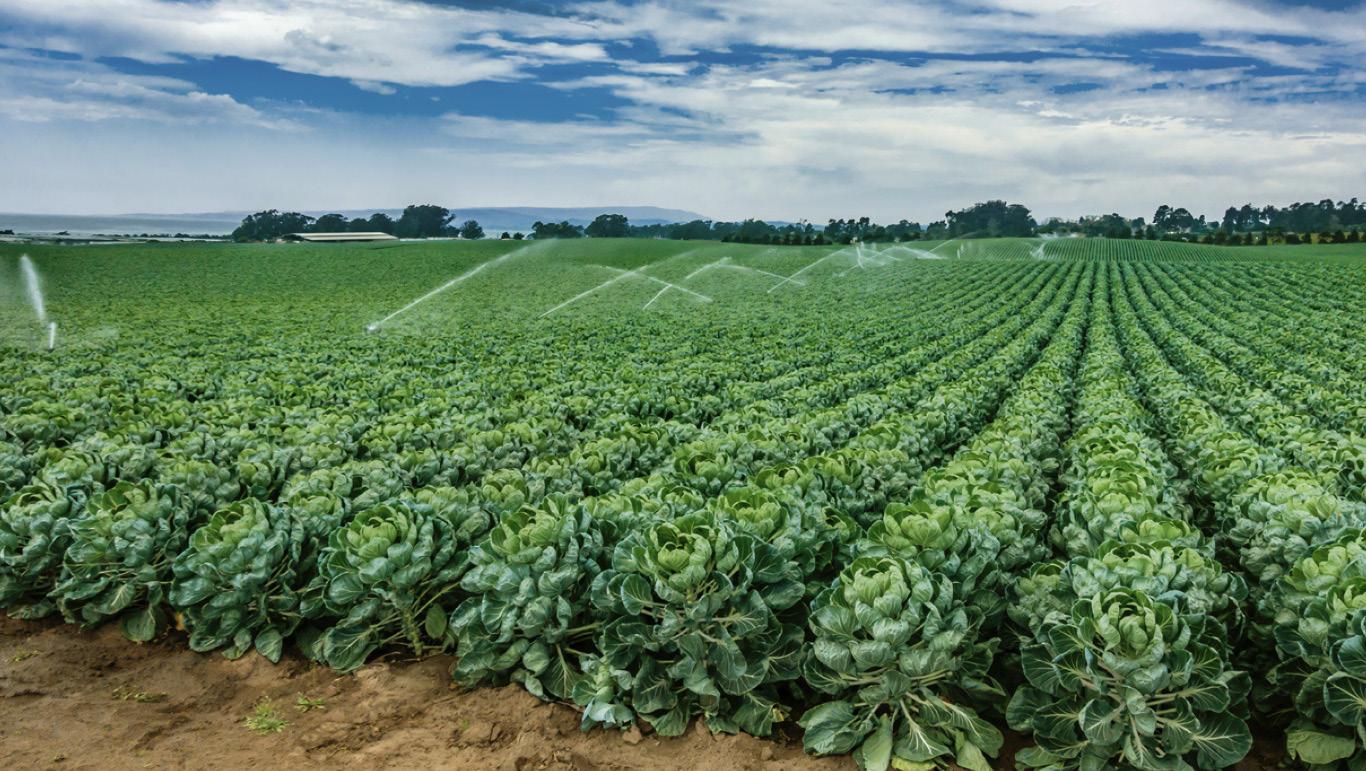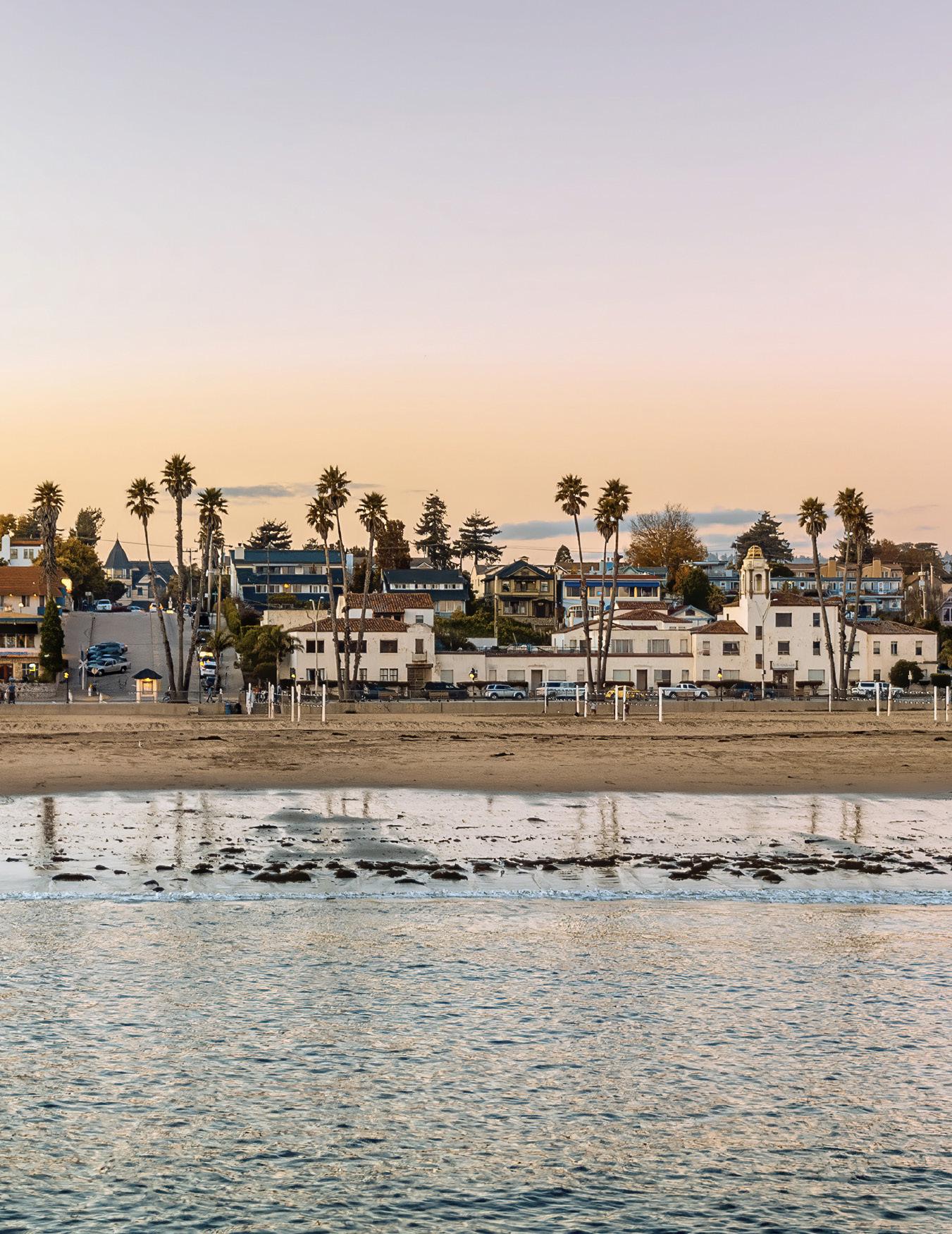
RELOCATION GUIDE FOR THE COUNTY OF


RELOCATION GUIDE FOR THE COUNTY OF
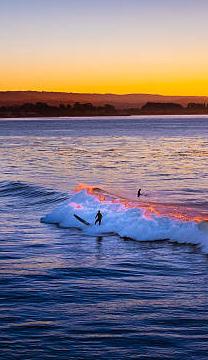
WELCOME
SANTA CRUZ COUNTY MAP
APTOS CAPITOLA
CORRALITOS LARKIN VALLEY
NORTH SANTA CRUZ COUNTY, BONNY DOON & DAVENPORT
SAN LORENZO VALLEY
BEN LOMOND, BOULDER CREEK & FELTON
SCOTTS VALLEY SOQUEL
SANTA CRUZ
WATSONVILLE 3 5 6 7 8 9 10 11
13
14
Miles of curving coastline. Rocky cliffs and natural bridges sculpted by the blue waves of time. Pristine stretches of sand and surf. Rolling hills and sunny meadows adorned with native oaks and madrones. Ancient redwood forests alive with the mysterious scents of rich dark earth. Mountain peaks rising boldly above the morning mist. Verdant valleys renowned for the bounty of their harvest. World-class weather. Awe-inspiring views.
This is a community defined by a strong and delightful sense of place. Join us for a personal tour of the Sanctuaries of the Monterey Bay and discover what thousands of satisfied clients have discovered over the years...Santa Cruz is home.
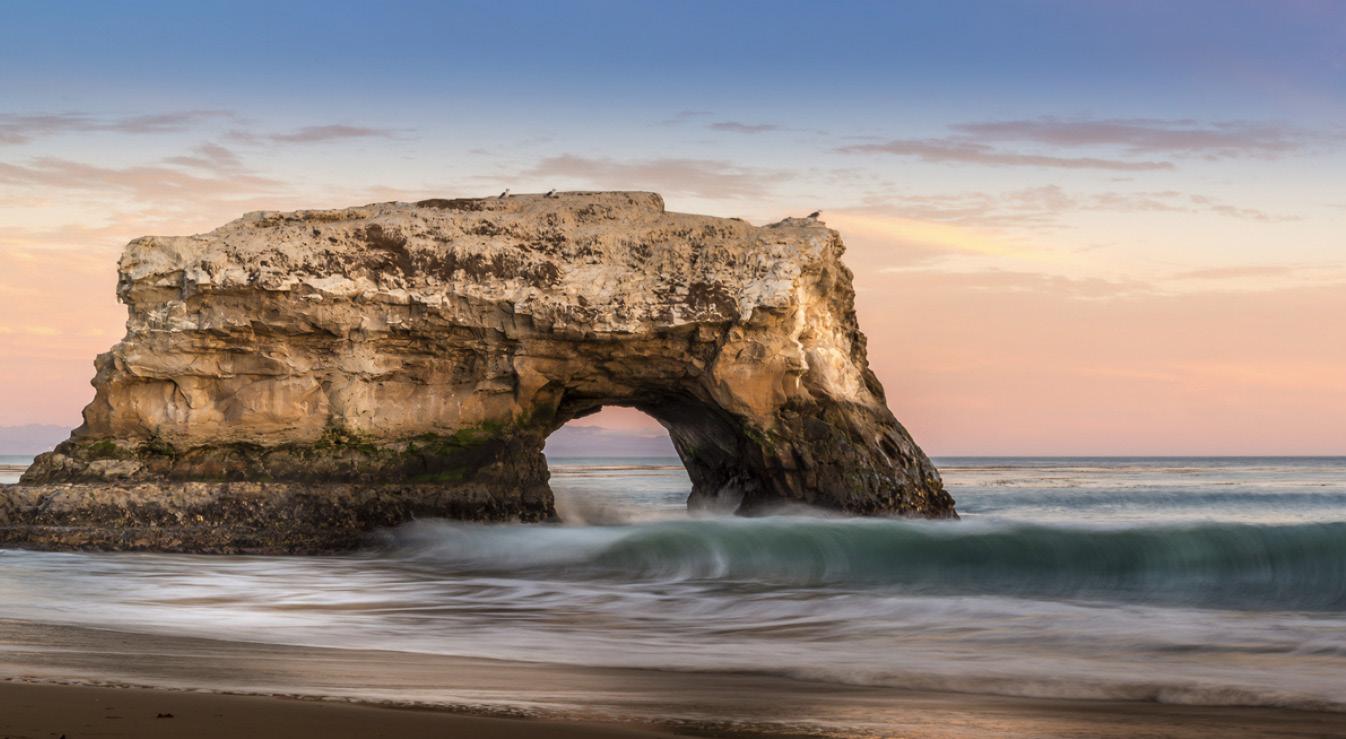
Santa Cruz County is located on California’s Central Coast, 65 miles south of San Francisco and 35 miles north of Monterey. Situated on the northern side of Monterey Bay and framed by redwood forested mountains, Santa Cruz County has 29 miles of beaches and an extraordinary number of state parks – 14 in all – each offering a unique experience for visitors.
Just 30 minutes to Silicon Valley and a little more than an hour’s drive to San Francisco, the nearest airport is just 30 miles away in San Jose.
Santa Cruz is home to the University of California Santa Cruz, known for its highly respected engineering school, oceanographic research facilities, and groundbreaking astronomy department which offer strong ties to the technology community in Silicon Valley.
The roots of the county lie in its agricultural and tourism industries, which are still active across the landscape today. A fertile home for organic farming, growing berries, apples, grapes, olives, and artichokes. Santa Cruz is a unique vacation destination for people from all over the world who are drawn to the beaches, surfing, fishing, and much more.

29
MILES OF BEACHES IN SANTA CRUZ COUNTY
14
UNIQUE STATE PARKS AND BEACHES
65
MILES SOUTH OF SAN FRANCISCO
300 DAYS OF SUNSHINE ON AVERAGE EVERY YEAR



When the Native Americans named this part of our county, they called it Awatos – “Where the Waters Meet.” The name honors the spot where two creeks joined before traveling together to the bay. Today, we call this place Aptos. The sights are equally diverse. Within a few minutes, you can go from the nature trails of a redwood forest to the relaxed elegance of Seascape Resort.
It’s also a place of good humor. If you doubt that,
then come by for the Aptos Fourth of July parade. Billed as “The World’s Shortest Parade,” it covers all of two blocks and includes nearly every Aptos resident, both human and animal. Even visitors are welcome to participate - just arrive in costume and be prepared for fun.
A new addition on the coast and well worth the visit is Aptos Village, with its pedestrianfriendly town square and small town charm that harkens back to another era. This new
community offers a charming collection of homes, shops, and restaurants. French inspired Cafe Sparrow is a must for Sunday brunch or casual dinners. Relax at Cat + Cloud Coffee, shop for healthy food at New Leaf Market, and stop by Sereno to see what’s happening in the housing market. Just down the road in the Redwood Village, stock up on picnic supplies at the Palm Deli before heading into the Nisene Marks State Park for an afternoon exploring the forest.
Go west to Rio Del Mar Beach and you can find another great place to spend the day at the beach or dine at a really fine restaurant, the Bittersweet Bistro. Down on the beach, you’ll certainly
want to inspect the remains of the SS Palo Alto, a ship constructed of concrete, intended to be used as a tanker at the end of WWI. It was never used for service and eventually was grounded, where it still sits today. At one time it housed a restaurant and dance hall, but today, only seabirds and marine life occupy its hull.
Capitola is bestowed with a craggy coastline that breaks into a wide beach with an incredible view of Monterey Bay. Indeed, the site was so popular that a massive hotel once stood on the bluffs. Today, visitors are drawn instead to smaller inns, vacation rentals, or to the famed Capitola Venetian, a multi-colored landmark that reportedly was the first condominium in California.
The town naturally resembles an amphitheater with dramatic cliffs dotted with unique homes, a center village, Soquel Creek, and a large railroad bridge.
Capitola Village offers numerous galleries, boutiques, and casual restaurants ideal for dining. For this small village, dining choices are varied from great hamburgers to Mexican and seafood. There is nighttime entertainment at some of the establishments in the village. Just up the river, the famed Shadowbrook Restaurant has a cable car that takes diners down its hillside to the restaurant’s front door. The regionally famous, Gayle’s Bakery, is located just up the street.
The annual Begonia Festival fills the Soquel Creek with flower-draped floats created by local competitors. The sand castle contest is a must-see. If you want to be a part of these festivities, book your accommodations early, because the town is a popular destination for locals and visitors alike.

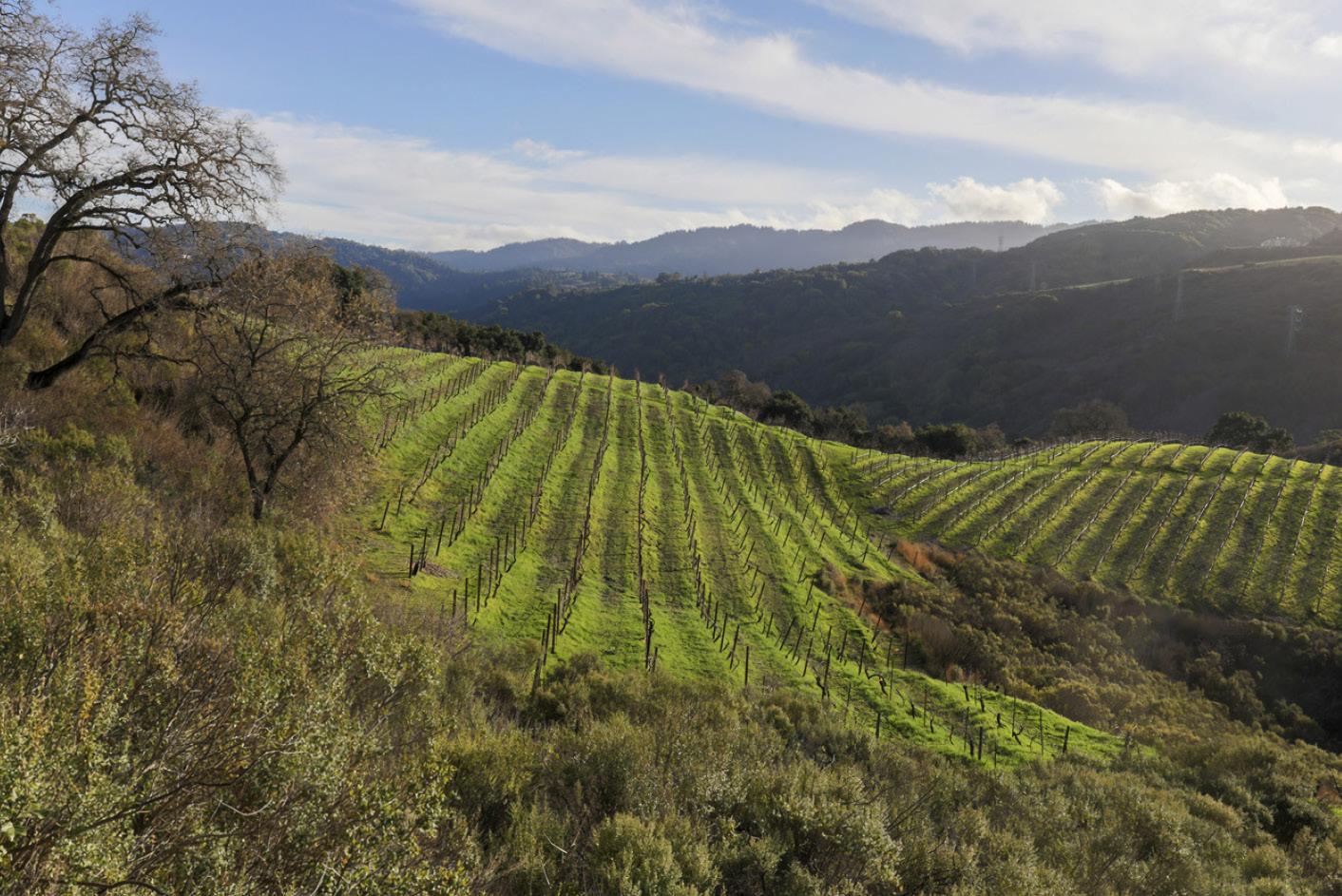
The Corralitos/Larkin Valley region is part of unincorporated Santa Cruz County and in some cases, shares a Watsonville address. Homes in these two regions are located in the Santa Cruz Mountains and offer a variety of views. Idyllic settings abound in both of these regions, with rolling hills and acreage homes that cater to an equestrian lifestyle.
The Corralitos Region has developed into an excellent grape growing region with a microclimate perfectly suited for the production of Chardonnay and Pinot Noir. If buying and tasting wine is your thing, you are in luck. This region is home to four family-owned wineries.
Windy Oaks Estate’s premium wines are grown in
unique terroirs in the Santa Cruz Mountains. The winemakers have been offering fine wines since 1999. Alfaro Family Vineyards & Winery are known for their estate grown and bottled Chardonnay, Pinot Noir, Merlot, Syrah and unique Gruner Veltliner. Their wines reflect the unique landscape of Corralitos.
Pleasant Valley Vineyards produces the Brittany Morgan Chardonnay and Dylan David Estate Pinot Noir from French Dijon clone vines and celebrated their first crush in 2000.
Nicholson Vineyards Winery is known for its estate Chardonnay and Pinot Noir and relaxed atmosphere to enjoy the hand-crafted wines in the perfect California landscape.
Years ago, the tiny settlement of Davenport was famous for its successful whaling industry. Today, the cliffs of Davenport offer some of Santa Cruz County’s best vantage points for watching these protected mammals during their annual migration.
Captain John Davenport gave his name to this northern coastal community, where he set up a whaling operation after the Civil War. A cement plant operated out of Davenport which drew workers to the region, further adding to its expansion. Eventually a village grew up around the area. For many years the village prospered with several hotels, a blacksmith, church, and general store.
Judging from its small size, the casual observer would think that all the charms of Davenport can be assimilated in a few minutes. That assumption would be well off the mark. For starters, there’s the Davenport Roadhouse, formerly known as the Cash Store. It features an inn with 9 rooms , a store featuring local handcrafted artisan creations and a center of activities for guests and the local community. A beacon for travelers from near and far looking to make a quick stop for a delicious to-go meal or picnic, or for others staying a while to get back to nature and enjoy healthy and hearty food — all enjoyed at their own pace. The Restaurant offers organic California Coastal Cuisine that is enjoyed by locals and tourists alike.
Just a hop down the street, the famous Lundberg Studios occupy an inconspicuous house. Inside, glass makers create incredibly detailed works of art – paperweights, vases, ornaments and other fragile designs – have made their way into museums and private collections. In fact, Lundberg’s work has been compared to that of Louis Comfort Tiffany, himself! But don’t quit there. With a bit of curious investigation, you can find an entire artists’ community hidden along the rural streets.
Boony Doon Beach is a stunning beach backed by dunes and is surrounded by high cliff walls. A creek, Liddell Creek, flows through a tunnel in the rock wall at the back of the beach and flows around the south end of the beach to the ocean. From the parking area, you might have to wade across the creek or cross on a log to reach the beach. If you want to hike around, there are old double-track farm trails on the bluffs north and south of the beach. The northern trail leads to Shark Fin Cove, where a massive finshaped rock stands guard over a small cove. The southern trail leads to views of Panther Beach and Hole in the Wall. Be careful swimming along the northern beaches, as the area has powerful rip currents.
You can find more than a few good reasons to stay awhile. In contrast to its small size, this coastal treasure has a whale-sized personality!
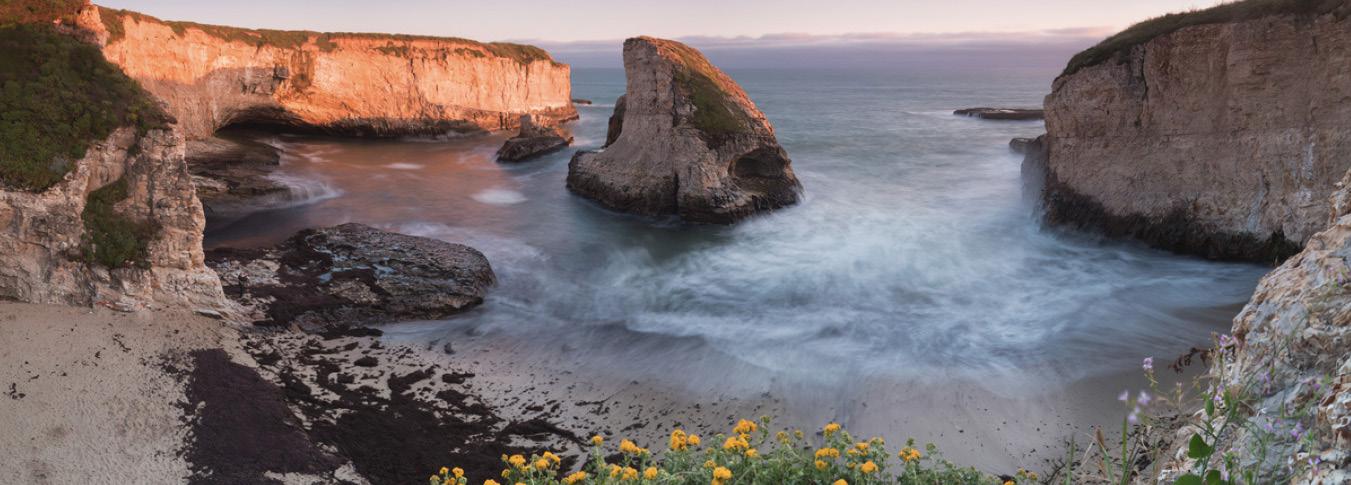
If Hollywood was to choose the ideal place for a story about independent mountain people, then the tiny towns of the San Lorenzo Valley would win in a heart beat. That’s why it’s no surprise that several movies have been filmed here against the backdrop of steep hillsides, lush meadows, and forests that nearly reach the clouds. Through it all, the San Lorenzo River makes its lazy journey from the summit to the sea.
A century ago these hills echoed with the rasping sounds of bucksaws, as loggers harvested millions of redwoods and Douglas fir to feed the housing needs of a growing country. Many of the best areas were clear-cut and left to regenerate on their own.
Fortunately, they did, giving us one more chance to appreciate and protect what nature put here. San Lorenzo Valley people are like that, too – strong and resilient, independent yet living in tight communities. These are sophisticated

people who enjoy a quiet way of life. Many of them spend their workdays as engineers, technicians, and managers in the high-tech world of Silicon Valley, but they return home to the quiet of the forests and the small towns they love.
Browse through any of the small gallery shops along Highway 9, such as The Country Home, and you’ll find the handiwork of many gifted local artisans. In many cases, their names are recognized on regional and national levels.
Valley restaurants offer a broad choice of menus, from the upscale to “down-home cooking.” You’ll find no cookie-cutter hotels in these parts, either. Instead, find respite in the Alpine motif of the Tyrolean Inn, the beautifullyappointed condos at the Boulder Creek Golf and Country Club, Brookdale Lodge, “where the river runs through,”or any of the historic riverside lodges that have welcomed visitors for decades.
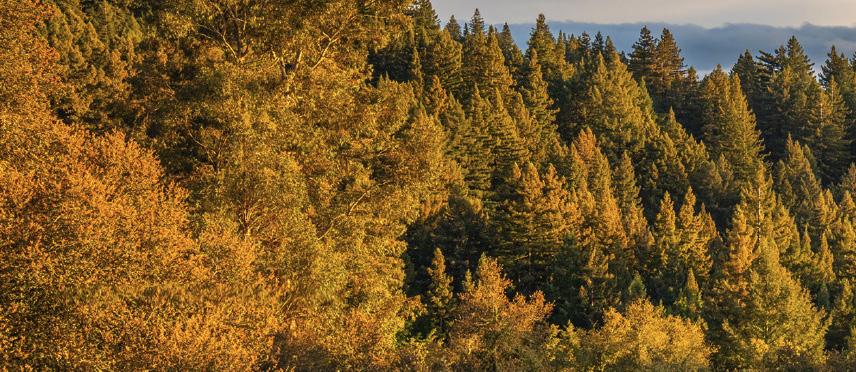
To Soquel, nature gave broad pastures and hillsides that climb to the summit of the Santa Cruz Mountains. Ask people why they live here and they’ll mention the friendly residents, the fresh air, and the little home-town neighborhoods sprinkled among the woods. There’s even a whitesteepled church on the corner. Don’t miss Soquel if you are a treasure hunter. This community is home to many antique shops and emporiums.
Visitors are always impressed with the concentration of fine restaurants in tiny Soquel. Dining choices range from Thai, to seafood, and Italian. Theo’s Restaurant and Bella Rosa’s are just two of the many fine dining places you can discover. Before leaving town, a stop at Bargetto’s wine tasting room has become a tradition for locals and visitors alike.
Seasons in Scotts Valley are characteristic of mountainous coastal terrain. Summers are mild with occasional cool, foggy mornings. Autumn is typically warm with little rainfall. Winter brings necessary rain, but is otherwise relatively mild with temperatures ranging from the 30s to the 60s. Spring means gradually warming temperatures with occasional moderate rainfall. The annual average temperature is 68 degrees and the average annual rainfall is 41.18 inches. Scotts Valley is situated in northern Santa Cruz County. The city thrives, just a short distance from Monterey Bay and Silicon Valley, nestled in the redwoods in the Santa Cruz Mountains. It is approximately 6 miles north of Santa Cruz, 30 miles southwest of San Jose, and 68 miles south of San Francisco.
Scotts Valley is named after Hiram Scott, who settled in Santa Cruz and purchased Rancho San Augustin in 1850. The city is situated on part of his family’s old ranch site.



Packed into 12 square miles, you will find stretches of beautiful beaches, redwood forests, a National Marine Sanctuary, UC Santa Cruz, the worldfamous Santa Cruz Beach Boardwalk, a marina and yacht harbor, the Santa Cruz Wharf, and a bustling downtown district with shops and restaurants.
Surfing off of Steamer Lane, a potboiler landing for Pacific waves, has become one of the legendary places to ride a surfboard. The waters in and around
Santa Cruz host enthusiasts of sailing, fishing, kayaking, body surfing, and just plain toe wiggling.
The Santa Cruz Yacht Harbor hosts a blend of old-world fishermen and high-tech sailing craft, with row boats and fair-weather sailors who all share their love of the water with seals, otters, and seagulls. Not quite as legendary, but sometimes infamous, are the Wednesday night sailboat races which, if you are not participating, can be very entertaining to watch. You can sometimes find a beach party of sailboat greeters waiting for the spectacular sights of colorful spinnakers raising into the sunsethued sky as they make their way down wind.
For those looking for fun on dry land, the Boardwalk’s Giant Dipper rollercoaster has been thrilling riders since it first opened in 1924. For something a bit more futuristic, save the world from intergalactic destruction at the Boardwalk’s new virtual reality games. Santa Cruz offers more than just its beaches. Venture down Pacific Avenue to find a smart downtown,
rebuilt in fine style following the Loma Prieta earthquake in 1989. It’s an entertaining place to be, day or night.
Up on “the hill,” the University of California Santa Cruz campus is home to some of the world’s finest programs in arts and sciences. This lovely campus has a vantage point from which to see the beauty of Santa Cruz. It’s situated in an idyllic setting, among the majestic redwood groves and rolling hillsides splattered with wildflowers and ocean breezes. There are many nature trails on and around the campus that are open to visitors.
Santa Cruz has thrived in some distinct eras; as an old-world fishing village, during the Edwardian period, in the fifties-style beach parties, the 1960s free-thinking era, and as a place for intellectuals, artists, and performers. The rebirth of this beautiful city since the earthquake of 1989 demonstrates its strength as a destination for vacationers proving. One thing remains constant... Santa Cruz is the place to be.
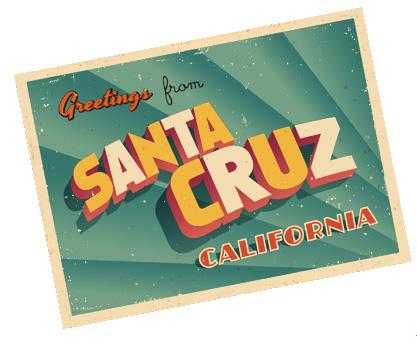
The fertile land surrounding Watsonville has brought forth a bounty of fruits and vegetables destined for dinner tables. Watsonville and its surrounding villages are home to the farmers and workers who till the fields and coax life from the earth. It’s from these fields that a great quantity of strawberries, olallieberries, apples, lettuce, brussels sprouts, and colorful flowers are harvested and shipped around the world. Each year, the “best of the bunch” are showcased at the Santa Cruz County Fair in September, where locals compete in categories as diverse as winemaking, pig breeding, pickling, and quilt making. Many go on to win statewide medals.
Watsonville is more than farming. Its broad Main Street is a true community center, lined with lively dance clubs, family restaurants, intimate shops, and department stores, all catering to a multi-ethnic clientele. Visitors who like their accommodations to have a beach view often choose the private condominiums at Pajaro
Dunes, a collection of comfortable homes with a clubhouse and restaurant.
William Weeks, the internationally-acclaimed architect, liked this city so much that he created outstanding Victorian homes for several of the residents. An easy walking tour will take you past his enduring work.
The Henry Mello Center for the Performing Arts is a benefit of the 1989 earthquake. This acoustically-fine auditorium was built to replace the one lost to the trembler. The Center is open for public performances, including the Santa Cruz County Symphony and the Watsonville Taiko Drummers.
Private aircraft are welcome in Watsonville, site of the county’s only airport. This general aviation terminal comes alive each Memorial Day weekend when dozens of vintage planes converge for the Watsonville Fly-In & Air Show.
